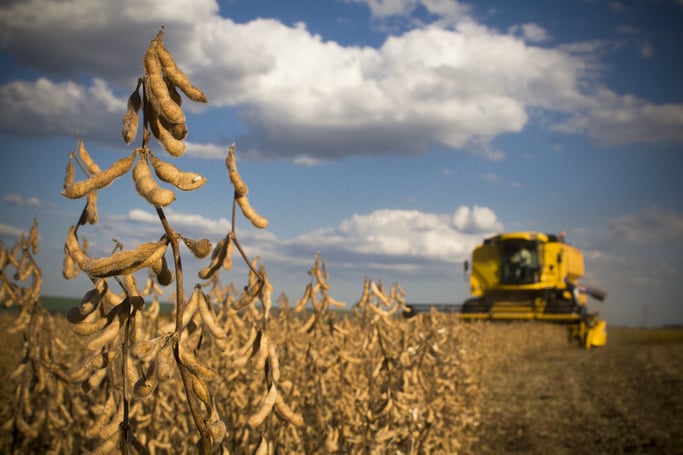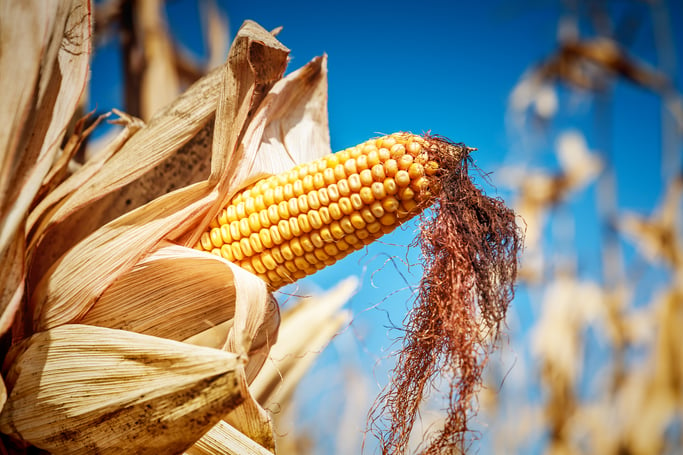Question: How can I be sure that I’m harvesting soybeans and corn at the right time for maximum profit?
Answer from Jeff Divan, Ceres Imaging Lead Agronomist:
Accurately assessing the moisture content of soybeans and corn is key to maximizing yields and profit—as is making a harvest plan that gets you in the right place at the right time. Late-season imagery can help in identifying the most mature fields, as well as highlighting the extent of stand issues in corn.
Soybeans
Harvesting soybeans can be a combination of luck, art, and skill. There’s no controlling your luck—but developing the art and skill can earn you big dividends at the elevator.
As soybeans begin to dry down, growers should monitor crop moisture levels and determine the best field harvest order. To maximize grain weight and minimize yield losses, harvest should begin as soon as the crop moisture content falls to between 13% and 14%. Harvesting as much of the crop as possible before the moisture level drops below 12% will help to reduce splits and cracked seed coats.

When mature soybeans undergo multiple wetting and drying cycles, the grain can lose test weight and quality. Late-season imagery can help identify which varieties are maturing the quickest and help you determine the optimal harvesting order.
Keep in mind how significantly an incorrect assessment of moisture content will impact the bottom line. Soybeans delivered at a moisture content above 13% can be docked by the elevator. Soybeans testing under 13% moisture may be accepted by the buyer, but the grower will lose profit potential for the reduced moisture content.
Corn
Once physiological maturity (black layer) is reached in corn, it is time to start thinking about moisture content. Monitoring grain moisture in late September while planning a harvest route allows you to target a moisture level that strikes a balance between minimizing harvest losses and reducing grain drying costs.
Agronomists generally recommend that harvesting corn for dry grain storage should begin at about 24-25% grain moisture. With high temperatures, it’s easy to underestimate the grain drying rates—potentially a costly mistake. Harvesting at lower moistures can increase mechanical losses due to ear drop, stalk lodging, and kernel shattering.

Grain buyers trade corn at the standard moisture of 15.5%. When grain is delivered to the elevator with a higher percentage of grain moisture, the weight is adjusted down. According to a study done by Iowa State University, grain that matures in late September can have an average daily drydown rate as low as 0.3 or greater than 1 percentage point per day, depending on drying conditions. It is possible for corn to lose 10 moisture percentage points during the month of October, after reaching maturity at the end of September.
Temperature, humidity, weather, and grain maturity influence grain drydown rates. Taking 10 random samples from each field, mixing them together for an average, and using an accurate moisture meter to determine the moisture content of your crop will help to determine which field is ready to be harvested at the appropriate time.
